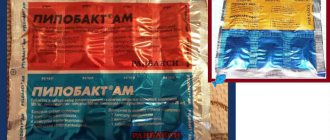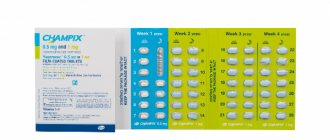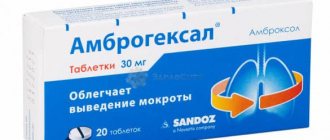Foradil Combi
Formoterol
Immune system disorders: very rarely - hypersensitivity reactions such as arterial hypotension, urticaria, angioedema, itching, rash.
Mental disorders: infrequently - agitation, anxiety, increased excitability, insomnia.
Nervous system disorders: often - headache, tremor; infrequently - dizziness; very rarely - taste disturbances.
Cardiac disorders: often - palpitations; infrequently - tachycardia; very rarely - peripheral edema; frequency unknown - angina pectoris, cardiac arrhythmia, incl. atrial fibrillation, ventricular extrasystoles, tachyarrhythmia.
Disorders of the respiratory system, thoracic and mediastinal organs: infrequently - bronchospasm, including paradoxical, irritation of the mucous membrane of the pharynx and larynx; frequency unknown - cough.
Gastrointestinal disorders: infrequently - dryness of the oral mucosa; very rarely - nausea.
Musculoskeletal and connective tissue disorders: uncommon - muscle spasms, myalgia.
Laboratory and instrumental data: frequency unknown - decrease in serum potassium, increase in serum glucose concentration, prolongation of the QT interval on the electrocardiogram, increase in blood pressure (including arterial hypertension).
Skin and subcutaneous tissue disorders: frequency unknown - rash.
Budesonide
Endocrine system disorders: rarely - suppression of adrenal cortex function, Itsenko-Cushing syndrome, hypercortisolism, hypocortisolism, growth retardation in children and adolescents.
Visual disorders: rarely - cataracts, glaucoma.
Immune system disorders: rarely - hypersensitivity reactions, rash, urticaria, angioedema, itching; frequency unknown - contact dermatitis (delayed type hypersensitivity reaction (IV).
Mental disorders: frequency unknown - psychomotor hyperactivity, sleep disturbances, anxiety, depression, aggressive behavior, behavioral disorders (especially in children).
Gastrointestinal disorders: often - difficulty swallowing; frequency unknown - disturbance of taste.
Musculoskeletal and connective tissue disorders: rarely - decreased bone mineral density.
Disorders of the respiratory system, chest and mediastinal organs: often - cough; rarely - paradoxical bronchospasm, candidiasis of the oral mucosa and larynx, pharyngeal irritation, dysphonia, which resolves after stopping budesonide therapy or after reducing the dose.
In a 3-year clinical study, when using budesonide in patients with COPD, there was an increase in the incidence of subcutaneous hematomas (10%) and pneumonia (6%) compared with the placebo group (4% and 3%, with r
special instructions
Among the side effects of inhalation powder are decreased concentration and dizziness, therefore, during medication therapy, you should not operate potentially unsafe means, drive a car or work with dangerous mechanisms. The instructions do not contain information about the effect on the fetus, therefore the drug can be used during pregnancy only under the supervision of a doctor. Combi should be used with caution if you have diabetes.
Pharmacological properties
Pharmacodynamics
The therapeutic properties of Foradil Combi are determined by the pharmacodynamic characteristics of the active substances in its composition:
- formoterol: a selective β2-adrenergic receptor agonist that has a bronchodilator effect in patients with reversible airway obstruction. The effect occurs quickly (from 1 to 3 minutes) and persists after inhalation for 12 hours. The use of therapeutic doses of formoterol virtually eliminates its effect on the function of the cardiovascular system (noted in exceptional cases). By inhibiting the release of histamine and leukotrienes from mast cells, it exhibits anti-inflammatory effectiveness, preventing the development of edema and the accumulation of inflammatory cells (confirmed in animal experiments). Clinical studies have found that formoterol effectively prevents bronchospasm provoked by physical activity, inhaled allergens, cold air, histamine or methacholine. Due to the fact that the bronchodilatory effect of formoterol remains pronounced after inhalation for 12 hours, the use of Foradil Combi 2 times a day with long-term maintenance treatment in most cases allows to provide the required control of bronchospasm in patients with chronic lung diseases both during the day and at night . In stable cases of chronic obstructive pulmonary disease (COPD), formoterol also provides rapid onset of bronchodilation and improves quality of life;
- budesonide: a glucocorticosteroid (GCS), intended for inhalation use, has virtually no systemic effect. Like other inhaled corticosteroids, its pharmacological effectiveness is ensured through interaction with intracellular glucocorticosteroid receptors and is manifested by anti-inflammatory, antiallergic and immunosuppressive effects. Budesonide increases the production of lipocortin (phospholipase A2 inhibitor), inhibits the release of arachidonic acid and the synthesis of its metabolic products - prostaglandins and cyclic endoperoxides; prevents marginal accumulation of neutrophils, reduces inflammatory exudation, inhibits the production of cytokines, slows down the migration of macrophages, reduces the severity of infiltration and granulation, suppresses the formation of a chemotaxis substance (which ensures the effectiveness of the drug in relieving delayed-type allergic reactions); slows down the release of inflammatory mediators from mast cells (immediate allergic reactions). Budesonide promotes an increase in the number of active β-adrenergic receptors, as a result of which the patient’s response to bronchodilators is restored (allowing a reduction in the frequency of their use), swelling of the bronchial mucosa, the production of mucus and sputum are reduced, hyperreactivity of the respiratory tract is reduced, and mucociliary clearance is enhanced. A clinically significant therapeutic effect after the start of therapy in patients requiring corticosteroids develops on average within 10 days. Regular use of budesonide for bronchial asthma reduces the severity of the chronic inflammatory process in the lungs, thus improving their function, alleviates the symptoms of bronchial asthma, inhibits bronchial hyperreactivity, preventing the development of exacerbation of the disease.
Pharmacokinetics
Pharmacokinetic characteristics of formoterol:
- absorption: the substance is rapidly absorbed when administered by inhalation. As a result of using a single dose of formoterol (120 mcg), Cmax (maximum plasma concentration) is reached in 5 minutes and is 266 pmol/l. Due to oral administration, absorption in the gastrointestinal tract (GIT) also occurs quickly, up to 65%. When treating COPD for 12 weeks, 2 times a day at a dose of 12 or 24 mcg of formoterol, its concentration in the blood plasma, measured 10, 120 and 360 minutes after inhalation, is 11.5–25.7 pmol/l and 23. 3–50.3 pmol/l, respectively; concentration in the systemic circulation increases in proportion to the dose (12–96 mcg);
- distribution in organs and tissues: formoterol binds to plasma proteins by 61–64%, of which 34% binds to serum albumin. Within the concentrations recorded after administration of the drug in therapeutic doses, saturation of binding sites is not achieved;
- metabolism: the main metabolic pathway of formoterol is direct binding to glucuronic acid, another pathway is O-demethylation with further glucuronidation. Secondary metabolic processes include the conjugation of formoterol with sulfate with their subsequent deformylation. Many isoenzymes of formoterol are involved in the processes of glucuronidation (UGT1A1, 1A3, 1A6–10, 2B7, 2B15) and O-demethylation (CYP2D6, CYP2A6, CYP2C9, CYP2C19), this suggests a low possibility of drug interactions by inhibiting any isoenzymes involved in the metabolism of formoterol. In the range of therapeutic doses, formoterol does not inhibit isoenzymes of the cytochrome P450 system;
- excretion: in bronchial asthma and COPD, when used for 12 weeks, doses of 12 or 24 mcg 2 times a day unchanged in the urine were determined to be ~ 10% or 7%, respectively. Formoterol and its metabolites are excreted from the body completely: with urine - 70%, with feces - 30%. Renal clearance – 150 ml/min. Half-life (T1/2) – 120–180 min.
Pharmacokinetic characteristics of budesonide:
- absorption: the substance is completely and quickly absorbed when administered by inhalation, Cmax is achieved immediately. Taking into account the deposition of budesonide on the mucous membrane of the oropharynx, its absolute bioavailability is 73%. Due to oral administration, absorption in the gastrointestinal tract is ± 10%;
- distribution to organs and tissues: volume of distribution (Vd) – 3 l/kg. According to research, budesonide accumulates in the lymph nodes, spleen, thymus, reproductive organs, adrenal cortex, bronchi, and also penetrates the placental barrier;
- metabolism: budesonide is not metabolized in the lungs; its systemic clearance during inhalation administration is 0.5 l/min. Up to 88% binds to plasma proteins. After absorption, about 90% of the substance is metabolized in the liver, forming several inactive metabolites (compared to budesonide, their biological activity is one hundred times less), including 6β-hydroxybudesonide and 16α-hydroxyprednisolone. The main pathway of metabolism of a substance in the liver using the CYP3A4 isoenzyme of the P450 system can vary under the influence of inhibitors/inducers of the CYP3A4 isoenzyme;
- excretion: T1/2 of budesonide – 120–168 min, systemic clearance is high (1.4 l/min). The substance is excreted in the form of metabolites with feces - 10%, with urine - 70%. In liver diseases, the plasma concentration of budesonide increases.
Overdose
Symptoms of formoterol overdose may include reactions characteristic of β2-adrenergic agonists, such as headache, nausea, vomiting, drowsiness, tremor, palpitations, ventricular arrhythmia, tachycardia, metabolic acidosis, hyperglycemia, hypokalemia, arterial hypertension.
Supportive and symptomatic treatment is recommended, and in case of serious disorders, hospitalization is necessary. Cardioselective beta-blockers can only be used under close medical supervision, with extreme caution, as this may cause bronchospasm.
Since budesonide has low acute toxicity, a single high dose inhalation may cause temporary suppression of the hypothalamic-pituitary-adrenal axis. This condition does not require emergency treatment. Moreover, in case of overdose, it is possible to continue treatment of the underlying disease with budesonide in doses sufficient to maintain its therapeutic effect.
Analogs
Level 4 ATX code matches:
Tevacomb
Foster
Symbicort Turbuhaler
Seretide
Today, Foradil Combi has about 10 analogues in terms of pharmacological action among domestic and foreign medicines.
The main analogues of the drug Foradil Combi on the market are: Atmadisk Forte , Biasten , Seretide and Seretide Multidisk . Tevacomb and Foster are also popular .
Release form and composition
Foradil Combi is produced in the form of a set of capsules with powder for inhalation, which includes:
- capsules with formoterol (12 mcg): size No. 3, colorless, transparent, marked in black ink: “CG” on the cap, “FXF” on the body (or vice versa); filler – free-flowing white powder;
- capsules with budesonide (200 mcg): size No. 3, gelatin hard, cap – light pink, body – colorless, transparent; the capsule is marked “BUDE 200”; filler – white powder;
- capsules with budesonide (400 mcg): size No. 3, gelatin hard, cap – pink, body – colorless, transparent; the capsule is marked “BUDE 400”; filler – white powder.
The Foradil Combi package contains capsules with formoterol (12 mcg) and capsules with budesonide (200 mcg or 400 mcg). Capsules are packed in 10 pcs. in blisters, in a cardboard box complete with an inhalation device (aerolyzer), 3 or 6 blisters of capsules containing formoterol (12 mcg), and 1, 3, 6 or 12 blisters of capsules containing budesonide (200 mcg or 400 mcg).
Composition of 1 capsule with formoterol (12 mcg):
- active ingredient: formoterol fumarate dihydrate – 12 mcg;
- auxiliary ingredients: lactose monohydrate (milk sugar) – up to 25,000 mcg;
- capsule shell: gelatin 100%.
Composition of 1 capsule with budesonide (200 mcg):
- active ingredient: budesonide – 200 mcg;
- auxiliary ingredients: lactose monohydrate (milk sugar) – 24,770 mcg;
- capsule shell: red iron oxide (E172), titanium dioxide (E171), water, gelatin.
Composition of 1 capsule with budesonide (400 mcg):
- active ingredient: budesonide – 400 mcg;
- auxiliary ingredients: lactose monohydrate (milk sugar) – 24,540 mcg;
- capsule shell: red iron oxide (E172), black iron oxide (E172), Ponceau 4R crimson dye, titanium dioxide (E171), water, gelatin.
Interactions with drugs
The action of one of the active components, budesonide, is potentiated by methandrostenolone (an anabolic steroid) and estrogenic drugs. A lack of potassium in the body can occur when taken together with diuretics (diuretics), steroid hormones from the corticosteroid subclass, psychostimulants and nootropics (drugs that activate the brain).
- Multicooker-pressure cooker - rating of the best models
- Sweaty palms - causes for men, women and children. What to do if your palms sweat a lot - treatments
- Cough in a child without fever - how to treat it: medicines and folk remedies
The effect of the active substance Foradil is reduced by beta-blockers - medications that normalize blood pressure and slow down the heart rate. Side effects from the medication can develop when using sympathomimetic drugs - drugs similar in action to Foradil. The development of ventricular arrhythmias is possible when taken simultaneously with the following substances:
- quinidine;
- tricyclic antidepressants;
- procainamide;
- macrolide antibiotics;
- disopyramide;
- monoamine oxidase inhibitors;
- phenothiazines;
- antihistamines.
Contraindications
According to the instructions, if you are intolerant to the active ingredients (main and additional), you should not use the medicine. The use of the powder is prohibited for children under 6 years of age and patients with active pulmonary tuberculosis. Foradil is not intended for the relief of acute attacks of bronchial asthma. Contraindications to the use of powder for inhalation are also:
- lactation period;
- severe lactase deficiency;
- hereditary galactose intolerance;
- glucose-galactose malabsorption syndrome.
Use during pregnancy and lactation
According to the instructions, Foradil Combi can be used during pregnancy only if the expected benefit to the mother exceeds the potential risk to the fetus. In this case, the following properties of the components should be taken into account:
- formoterol: like other β2-agonists, it is able to suppress labor due to its relaxing effect on the smooth muscles of the uterus;
- budesonide: if GCS therapy is necessary during pregnancy, it is preferable to use it in the form of inhalations. Its systemic effect with this method of administration is much weaker compared to taking the drug orally.
Budesonide is released during lactation; whether formoterol passes into breast milk is unknown, therefore, when prescribing Foradil Combi, breastfeeding should be avoided.







